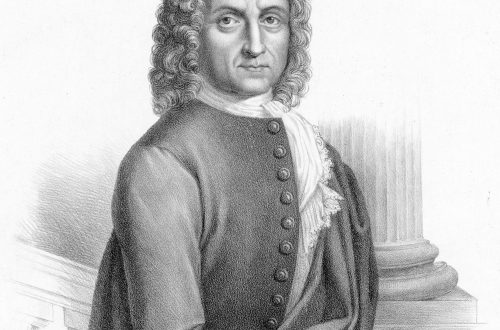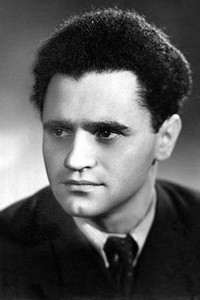
Henry Purcell (Henry Purcell) |
Henry Purcell
Purcell. Prelude (Andres Segovia)
… From his charming, such a fleeting existence, there was a stream of melodies, fresh, coming from the heart, one of the purest mirrors of the English soul. R. Rollan
“British Orpheus” called H. Purcell contemporaries. His name in the history of English culture stands next to the great names of W. Shakespeare, J. Byron, C. Dickens. Purcell’s work developed in the Restoration era, in an atmosphere of spiritual uplift, when the wonderful traditions of Renaissance art returned to life (for example, the heyday of the theater, which was persecuted in the time of Cromwell); democratic forms of musical life arose – paid concerts, secular concert organizations, new orchestras, chapels, etc. were created. Growing up on the rich soil of English culture, absorbing the best musical traditions of France and Italy, Purcell’s art remained for many generations of his compatriots a lonely, unattainable peak .
Purcell was born into the family of a court musician. The musical studies of the future composer began at the Royal Chapel, he mastered the violin, organ and harpsichord, sang in the choir, took composition lessons from P. Humphrey (prev.) and J. Blow; his youthful writings regularly appear in print. From 1673 until the end of his life, Purcell was in the service of the court of Charles II. Performing numerous duties (composer of the 24 Violins of the King ensemble, modeled on the famous orchestra of Louis XIV, organist of Westminster Abbey and the Royal Chapel, personal harpsichordist of the king), Purcell composed a lot all these years. Composer’s work remained his main vocation. The most intense work, heavy losses (3 sons of Purcell died in infancy) undermined the strength of the composer – he died at the age of 36.
The creative genius of Purcell, who created works of the highest artistic value in a variety of genres, was most clearly revealed in the field of theater music. The composer wrote music for 50 theatrical productions. This most interesting area of his work is inextricably linked with the traditions of the national theater; in particular, with the mask genre that arose at the court of the Stuarts in the second half of the XNUMXth century. (the masque is a stage performance in which game scenes, dialogues alternated with musical numbers). Contact with the world of theater, collaboration with talented playwrights, appeal to various plots and genres inspired the composer’s imagination, prompted him to search for more embossed and multifaceted expressiveness. Thus, the play The Fairy Queen (a free adaptation of Shakespeare’s A Midsummer Night’s Dream, author of the text, pref. E. Setl) is distinguished by a special wealth of musical images. Allegory and extravaganza, fantasy and high lyrics, folk-genre episodes and buffoonery – everything is reflected in the musical numbers of this magical performance. If the music for The Tempest (a reworking of Shakespeare’s play) comes into contact with the Italian operatic style, then the music for King Arthur more clearly indicates the nature of the national character (in J. Dryden’s play, the barbaric customs of the Saxons are contrasted with the nobility and severity of the Britons).
Purcell’s theatrical works, depending on the development and weight of the musical numbers, approach either opera or actual theatrical performances with music. Purcell’s only opera in the full sense, where the entire text of the libretto is set to music, is Dido and Aeneas (libretto by N. Tate based on Virgil’s Aeneid – 1689). The sharply individual character of lyrical images, poetic, fragile, sophisticated psychological, and deep soil connections with English folklore, everyday genres (the scene of a gathering of witches, choirs and dances of sailors) – this combination determined the completely unique look of the first English national opera, one of the most perfect composer’s works. Purcell intended “Dido” to be performed not by professional singers, but by boarding school students. This largely explains the chamber warehouse of the work – small forms, the absence of complex virtuoso parts, the dominant strict, noble tone. Dido’s dying aria, the last scene of the opera, its lyric-tragic climax, was the composer’s brilliant discovery. Submission to fate, prayer and complaint, the sorrow of farewell sound in this deeply confessional music. “The scene of farewell and death of Dido alone could immortalize this work,” wrote R. Rolland.
Based on the richest traditions of national choral polyphony, Purcell’s vocal work was formed: songs included in the posthumously published collection “British Orpheus”, folk-style choirs, anthems (English spiritual chants to biblical texts, which historically prepared the oratorios of G. F. Handel), secular odes, cantatas, catches (canons common in English life), etc. Having worked for many years with the 24 Violins of the King ensemble, Purcell left wonderful works for strings (15 fantasies, Violin Sonata, Chaconne and Pavane for 4 parts, 5 pawan, etc.). Under the influence of trio sonatas by Italian composers S. Rossi and G. Vitali, 22 trio sonatas for two violins, bass and harpsichord were written. Purcell’s clavier work (8 suites, more than 40 separate pieces, 2 cycles of variations, toccata) developed the traditions of the English virginalists (virginel is an English variety of harpsichord).
Only 2 centuries after Purcell’s death did the time come for the revival of his work. The Purcell Society, founded in 1876, set as its goal a serious study of the composer’s heritage and the preparation of the publication of a complete collection of his works. In the XX century. English musicians sought to draw public attention to the works of the first genius of Russian music; Especially significant is the performing, research, and creative activity of B. Britten, an outstanding English composer who made arrangements for Purcell’s songs, a new edition of Dido, who created Variations and Fugue on a theme by Purcell – a magnificent orchestral composition, a kind of guide to the symphony orchestra.
I. Okhalova





